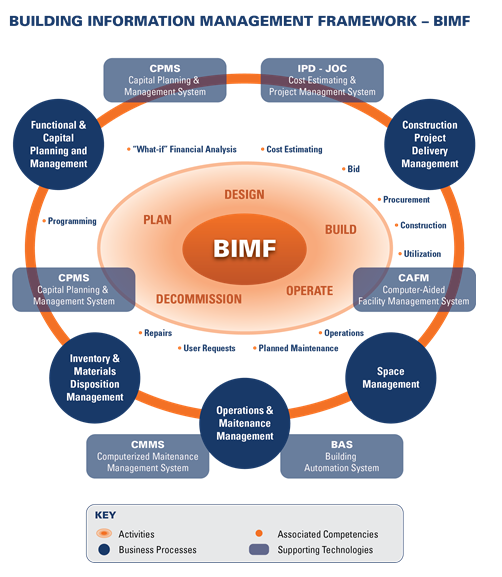Source of Quotations: Dawn Naney, Clay Goser and Marcelo Azambuja – “Accelerating the Adoption of Lean Thinking in the Construction Industry” on the topic of adopting lean management theory within the construction industry.
For BIM to succeed will require a fundamental changes in how the AEC industry (architecture, engineering, construction) industry does business. Integrated Project Delivery – IPD, Job Order Contracting, and similar LEAN construction methods will need be become mainstream. In the interim, BIM will be relegated to 3d visualization and an organic growth output of 2D CAD, vs. the process of efficiently managing the built environment supported by digital technology.
The entire design and construction industry needs to rethink Lean in terms of overhauling entire project delivery models. Once it is accepted that the change is not a singular independent piece of a larger system, but an entire system of systems, teams can realign expectations not just around potential benefits, but the level of comfort (or discomfort) that will be required to transform an industry for the purpose of real strategic advantage.
By examining Gartner’s five phases of adoption, one can identify interesting similarities to the construction industry’s acceptance of lean practices, organizational process change, and the ability to inform strategies to increase the speed of adoption. Our findings suggest that organizations can decrease time spent in the “Trough of Disillusionment” and accelerate the successful adoption of new process strategies such as Lean Thinking and Integrated Project Delivery and new technologies such as Building Information Modeling and collaborative tools through focused alignment and engagement.
The key to the successful adoption of an innovative change is to ensure that the amount of time spent between entering the Trough of Disillusionment and the climb up the Slope of Enlightenment remains as short as possible. By reducing this period, industry moves faster in acceptance of perceived benefits and best practices are codified quickly. The Trough of Disillusionment also explains why technologies often fail. They never make it out of this stage and the technology is abandoned or replaced (Fenn and Raskino 2008).
Many conclusions can be drawn from Lean Construction’s (BIM’s) adoption lifecycle. The first is that Lean Construction is a discontinuous innovation that requires a fundamental change to the way one conducts business. While Lean philosophy is not new to business and reduction of waste (non-value added activity) is firmly rooted in sixty years of development as illustrated in the Toyota Production System, it is relatively new to design and construction. The implementation of practices such as the Last Planner System, Set Based Design, Integrated Project Delivery, and Building Information Modeling, require a change in business practice.
Finally, we have not created the “perfect storm” to accelerate adoption by selling Lean as a philosophy not a tool. The Early Majority is still looking for the clear definition (for examples, see Alves et al. 2010) and/or the checklist (“do this and you are Lean”). After 20 years of distributing the message, why haven’t (construction industry) people flocked to proven methodologies that have transformed manufacturing and other industries?
If industry is to adopt Lean Thinking in construction, it needs to create a desire for stakeholders to participate differently to mitigate this risk. It needs to create a project delivery model that is rooted in the Lean principles and not just in the adoption of Lean tools.
Lean Construction (BIM) while an important innovation with great potential and benefit as an idea, alone is not enough to tip the scales towards socialized adoption. We need to understand the barriers to that adoption in order to develop strategies to remove them. Understanding that the Design and Construction industry is huge and accepting that as an industry it is relatively conservative when it comes to change adoption and has grown to the present organizational models over a long period, one draws several parallels from other industries and areas of study.
Key influencers must champion new ideas and have a message that is simple and compelling. In addition, there must be a contextual environment that promotes the change. When an environment deems a change as “optional” with no consequences, group dynamic will allow others to bear the responsibility for the change to the point where nobody will be responsible for the change.
via http://www.4Clicks.com – – Premier cost estimating and efficient project delivery software for JOC – Job Order Contracting, SABER, SATOC, IDIQ,MATOC, MACC, POCA, BOA. Incorporates visual estimating, exclusively enhanced 400,000 line item RSMeans cost database, project management, contract management,. and document management.


